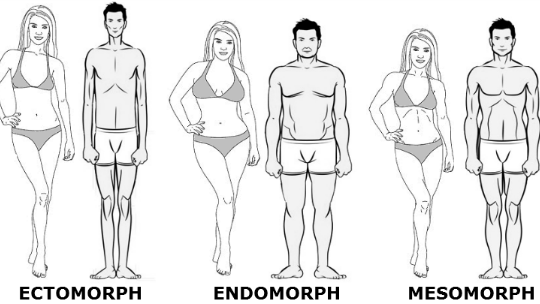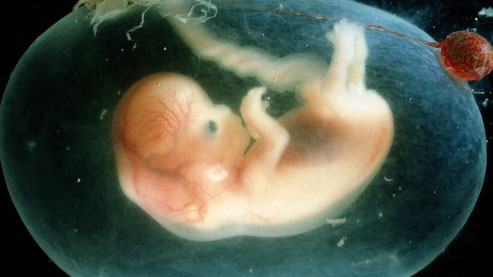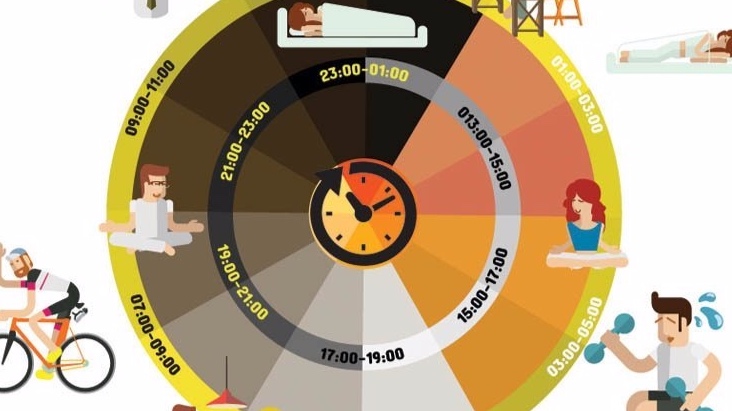Saname
PH360 Epigenetic Health Package
WHAT's MY EPIGENETIC PH360 Bio-Health Type?
http://SANAME FREE GENERAL HEALTH TYPE TEST

What this this mean?
Many popular diets and exercise crazes assume that they're going to work on everyone who tries them. However, every human being is unique. Health isn't one-size-fits-all. What works for one person may not work for you — it might even be detrimental! That's why we need to personalise our health programs to suit different body types. Once we know your biology then you tap into the world of personalised health tailored specifically to YOU.... we will talk about the role of genetics and epigenetics in determining your bodies' specific tendencies towards stress and food. We also delve into the different body types and what diets and exercises are most suitable for you, as some people are not build to run marathons & others are not build to lift weights or do gymnastics etc... EVERY BODY IS DIFFERENT!
If you want to get the full nitty gritty as to what specific foods are good for you and when to eat them and how much and what time of day you are best to exercise and what exercises you were specifically designed to do, then you will need to book/buy a full consult or you can DIY it yourself if you have a pretty good health background once you have completed the FREE test then you can buy the 1yr access to the app and get a personalised health assessment.
http://SANAME FREE GENERAL HEALTH TYPE TEST
What’s included in the FULL SPECIALISED SANAME PH360 Epigenetic Health Package
- Initial 2hr consult
- Health risk assessment
- Measure up and Platform Setup
- 1 x 1hr follow up (3 weeks later)
- 1 x 1hr follow up (6weeks later)
More info look at www.0468health.com
* Please discuss with Peta on 0468 432 584 prior to purchasing this appt
- Every individual is different, but SOCIETY keeps applying the same health approaches to everyone, which is WRONG
- Misalignment between the body and its environment causes diseases.
- Personalising your health helps you align yourself with your environment.
- People have different chronotypes which are based on when their bodies can tolerate stress.
- Some people are ‘Activators’. Their bodies respond best to adrenal systems. In turn, they have energy that matches their strength throughout the day.
- ‘Diplomats’ have bodies that respond better to their digestive and nervous systems. These people are more at risk for fluid retention, tiredness, and weight gain.
- Muscle and fat production relies on the hormones stimulated by food and exercise.
- ‘Crusaders’ have bodies that are neurally-driven and are not prone to obesity.
- Because Crusaders are more likely to lose muscle, they are recommended to eat several small meals per day.
- ‘Guardians’ have thick joints and big muscles. However, they also have the greatest capacity to store fat.
- Guardians are recommended to have two meals per day (breakfast and lunch) and a very light, if not non-existent, dinner.
- Because Crusaders are always on the edge of their fuel supply, intermittent fasting will impact their stress levels more.
- Crusaders should only do one day of intermittent fasting per week.
- Guardians, however, can go for extended periods of fasting because their rhythms are slower.
- Being in a peaceful environment helps manage stress levels and makes intermittent fasting more tolerable.
- Intermittent fasting and autophagy do not necessarily work for all.
- Because Guardians have strong and resilient bodies, they’re more likely to survive if there were a lack of food supply.
- A Guardian’s body is that way because in nature, they protect their community.
- ‘Sensors’, another ectomorph body type like the Crusaders, prefer nutrient-dense foods like vegetables.
- Guardians, however, like high-calorie foods more because they provide a feeling of safety.
- The dominant hormone for Guardians is prolactin—a ‘caring’ hormone.
- Diplomats search for a balance in serotonin—a hormone that you get as a reward for pleasurable things. This makes them assess an activity carefully if it’s going to be rewarding.
- Activators search for adrenaline, so they always want excitement and action.
- Crusaders' dominant hormone is dopamine, which creates drive and focus.
- Listen to the full episode to learn more about the different body types (like ‘Connectors’ and ‘Sensors’) and their dominant hormones.

Science has proven that your lifestyle can affect your health.
Decades of research gathered centuries of data from scientific studies and lifestyle interventions including anthropometry (measurements and proportions of the human body), endocrinology (endocrine glands and hormones), neuroscience (nervous system), embryology (the unborn embryo), biotypology (biotypes or organism sharing the same hereditary history), phenotypology (character diagnosis according to appearance) plus 9 other areas of science. Taking these into account along with body measurements science can assess your current health status. Over 10,000 data points are captured during this process. They use a combination of Western genetics and Traditional Chinese & Ayurvedic principles, then the data is used to calculate your current health.
In short it measures your genes and how they are currently behaving.
You are not controlled by your genes, but rather by the effect environment has on your gene expression. The good news is that you are in charge of the environment around your genes
Breaking the 80/20 rule. t's not just about nutrition and exercise - there is so much influence from other aspects of our lives that was, up until this point...very hard to understand.
Knowing the DNA is one thing, but how that DNA is expressed is actually more important. There is a reason you skin reacts a certain way to sunlight, the size of your organs, the length of your bones, and it is all related to the environment that your body has been surrounded by.
‘We know that everyone's different, but then when we go to actually doing the thing, we apply the average, or we apply what we think is appropriate thinking that everybody else is the same. So we have this disconnect between knowledge and action.’
‘The mind is also on a clock of its own. Essentially, if you're exercising at the wrong time, you set up the wrong kinds of hormones, then you can actually create complete stasis in your health.’
‘There’s a full continuum of where people are. This is based on not just their wants to wake up. . . it’s actually as to when a body can tolerate stress, and how that stress should be placed on them.’
‘Whether you put muscle or fat tissue on, it's actually not to do with your food or your exercise, it's got to do with the hormones that those foods and exercise stimulate.’
‘It's not a one size fits all when you hear everybody talking about intermittent fasting or doing these things—autophagy, inhibiting mTOR, and all those sorts of things.’
'The reason that their (Guardians') body is built the way it is is [because] when we go through famine as a community, their body goes into conservation. They essentially start growing, or they start slowing down their metabolism so that they can provide food for everybody else.'
‘If you put your body in the right environment, get the right foods, eat at the right times of the day, work and do your mental stuff, you'll get health and you'll get optimal performance and you'll get longevity.’
Ecto, Meso and Endo have been hugely confused with different definitions. This presentation goes through the morphology of somatotypes and how they actually link back to the simplest building blocks of life - the embryo.

Anthropometry
Have you ever wondered how health and fitness organisations came up with 'eat and train for your body shape?' You know the programs that ask if your shaped like a pear or have an hourglass figure or shaped more like a box, train this way or eat that way.
Well they were headed in the right direction - but this is only one piece of the pie.
It's based on an old science called anthropometry. Anthropometry is systematic measurements of the human body.
We have been measuring the human physique for thousands of years. Even Leonardo da Vinci's famous work Vitruvian Man, the naked man in the circle, was created by analysing cadavers.
In the twentieth century environmental and social conditions were correlated with these measurements. Anthropometrics were then used to assess nutrition and other socioeconomic factors.
The measurements were used to describe different physiques as seen in the image above; the endomorph, ectomorph and mesomorph.
Over time what researchers found was that while everyone fit into these three anthropometric somatotypes, many were hybrids and fit in between each of them.
So using this research they can up with a new system.
SENSOR Ectomorph
CRUSADER Ecto-Meso
ACTIVATOR Mesomorph
CONNECTOR Meso-Endo
GUARDIAN Endomorph
DIPLOMAT Endo-Ecto
Using 80 different anthropometric ratios with this new system they then created an algorithm that could decipher a more specific body type. It means health experts can now deliver a more personalised program or help educate individuals better on nutrition and socioeconomic factors.

Endocrinology
Hormones play a massive role in our lives. They significantly influence our health, including our thoughts, actions and behaviours. If we are having problems with our hormones we can be suffering from problems like diabetes, menopause, metabolic disorders, osteoporosis and thyroid issues just to name a few.
It all starts with the endocrine glands – they produce hormones that sustain metabolism, control sexual secondary characteristics, regulate temperature, influence behaviour, personality and mood, and many other physiological functions.
Endocrine glands could possibly be what determines our body shape, and the quality of tissues. Scientific evidence hasn’t yet established a clear cause and effect relationship. So, it’s unclear if hormones cause typical health type traits or if it’s the various factors in each health types body and lifestyle that effect hormone levels.
We all have the following hormones and each affect us similarly, but to what degree is different depending on your genetic bio-type.
Vasopressin - SENSOR
Dopamine - CRUSADOR
ACTH and adrenaline - ACTIVATOR
Oxytocin - CONNECTOR
Prolactin - GUARDIAN
Serotonin - DIPLOMAT
These hormones can also affect each other in different ways.
A whole-body approach including a balanced diet and exercise is vital to help keep your hormones in balance. But if there is a hormone imbalance, addressing what you eat should be your first step.

Epigenetics
New ground breaking science is promising to deliver massive changes to our health and how we understand heredity and disease. It's called epigenetic and it's what controls our genes.
What they've found is our environment can turn genes off (make them dormant), or turn them on (become active).
These findings could potentially give us control over our bodies and put an end to disease we get from our environment, or disease that is inherited.
What's ground-breaking is that scientists have found epigenetic is reversible.
So let me ask you something; if you knew how to change your environment today to avoid chronic disease (mental and physical) tomorrow, would you do it?
Epigenetics is life around you, what you eat, where you live, interactions with friends, family and strangers, when you sleep, exercise and even how you age. All of these in time will cause chemical modifications around your genes and over time will eventually turn them on or off.
With 20,000+ genes in each of our bodies the possible outcomes are enormous. Especially if we can reverse the genes state, keeping the good while eliminating the bad. Theoretically cancer would be cured, we would live longer, we could eradicate the obesity epidemic and the list is endless.
While the research is ongoing, for now what we do know is how to start implementing it into our daily lives, and it all comes down to the genetic bio-trends we spoke about in the Anthropometry column.
Genetic profiling helps you eat the right foods, exercise for optimal results, live and work in the right environment, understand how your mind works and how to find connect and love your relationships. Once implemented the personalised health plan has proven to eradicate the top eight chronic diseases including diabetes and obesity.

Neuroscience
The brain was once viewed as the compass or the main direction system for the body. Today we have the ability to measure the function of specific areas of the brain connected with response and resilience.
A tendency towards activity in specific regions of the brain has been mapped to correspond with mental tasks and processes, natural cognitive skills and reactivities.
Now, it is possible to gather information about a person’s behaviour and neurological processes based on the electrochemical activity in the brain.
The right prefrontal area contributes to the mental ability to brainstorm, explore ideas, deep reflection, results-orientation, track logical sequences and create plans, and use details and order to succeed.
The right temporal area contributes to the emotional expression, social connection, instinctive reactions, reflective behaviours, and sudatory perception and memory.
The right parietal area of the brain tends to be aware of visceral and tactile sensation such as pain, pressure, warmth or heat, spatial orientation, hand-eye coordination, quick physical reactions and risk assessment.
The occipital area tends to be sensitive to visual stimuli and aesthetic shapes, colours, art and even body language or linguistic nuances.
The left parietal area tends to be receptive to stimuli such as smell, taste, textures, or evens shifts in temperature, as well as spatial awareness and memory.
The left prefrontal area is great with using observations to learn, imitate and find patterns, which helps with the ability to predict possible future outcomes.
The left prefrontal contributes to self-awareness and behavioural inhibition or self-control. Rationalising and reasoning, resulting in a need for facts and information to understand something at a deeper level.
Personalised health reveals which of these neurological tendencies is dominant in each health type and can give us a better understanding of how people work.

Embryology
Well..... we all know how that works! But did you know that your parents experiences up until you are conceived also make up who you are?
It’s an interesting question that I will leave you with while we discuss the very basics of Embryology and how this very complex process was the creation of who you are genetically today.
I am going to keep this multifaceted puzzle as simple as possible.
In the first few weeks as the embryo grows there is ‘increasing complexity from differentiations of the cells into specialised tissues to form specific organs. This differentiation is directed by genetic factors inherited via the chromosomes from both the mother and the father.’
There are three major embryologic categories of cells called the germ cell layers, they are the Ectoderm, Endoderm and the Mesoderm. We measure this through a science called Anthropometry or measurements of the human body. This is where the Ectomorph, Endomorph and Mesomorph come from.
The Ectoderm leads to the development of the neural tube (brain and spinal cord), the neural crest and the outer epithelium of the body. With all this emphasis on the functions of the head and nervous system, less energy is placed on the rest of the body, resulting in an overall thin, lean and light body that is neurologically quite active.
From the Mesodermal layer, cardiac and skeletal muscles form, as well as smooth muscles, blood vessels, connective tissues, the kidney, heart, viscera and adrenal cortex develop. Mesomorph individuals are therefore typically toned with athletic bodies.
The Endoderm layer of embryonic development contributes to the formation of the primitive gut and the pharynx and thyroid. This focus on the gut tube means that Endomorphs tend to have more efficient metabolisms and get more from what they consume as well as in keeping those nutrient reserves in times of scarcity.

Molecular Biology
Diets!
Do they work?
Well, the short answer is yes.
The long answer is…. no.
But why you ask! And how can the answer be yes and no?
There are so many diets…. DASH, Mediterranean, Keto, Paleo, Lemon detox, Atkins and the list goes on and on and will continue to go on as long as the human race lets it.
If you have tried any of these, you will know that they work.. initially! But then once you’ve lost weight and come back to the reality that you are now officially starving, you then start to eat real foods that fill you up. And in half as much time as it took you to lose the weight you have put it all back on, plus another 5kgs…. WTF you think to yourself, how did I get here?!!
The next science we’ll be discussing is molecular biology and how we use it to determine what your genetic bio-type should and shouldn’t eat and why.
Molecular biology investigates interaction between various systems of a cell and the structure, function and regulation of protein, nucleic acids, enzymatic activity and even phenotypical expressions. Understanding effects at molecular level helps determine the best types of foods to eat, how nutrients act within the body and the factors that may promote or hinder our health.
What is good to eat or drink for one person may not be the best for another. So, researchers have brought all this information together and sectioned it into the health types we’ve been speaking about Activator, Crusader, Sensor, Diplomat, Guardian and Connector. Information is then gathered about the persons health history and future trends, current systems and physical needs. The algorithm can then give a person a fully personalised health plan with the right foods and drink for their body. It’s a plan that helps nourish a person to help them gain optimal health in their life. They get balance and choice... and they don't starve.
Food for thought right.
If you knew how to eat for your body type for optimal health, would you do it?

Chronobiology
Wouldn't it be nice to know exactly what you need to do to get optimal results for your body. Like how much sleep you need, the best time to eat your first meal after waking up in the morning and how to get the best results from exercise.
Well apparently scientist have figured this all out and it all depends on what your genetic bio-type is.
They now know how to plan a person’s life.
Life continually changes due to the fact that the planet is revolving around its axis and around the sun, which means that people are exposed to different forces periodically and cyclically. For example;
• The thymus and the immune system release more white blood cells overnight
• Cortisol tends to be higher in the morning
• Melatonin is needed to sleep
Our internal clock contributes to genetic activations (or repressions), hormonal shifts and physiological changes.
So, understanding the right times for eating the right food could mean massive weight loss without dieting. It’s also the answer to foods that upset your stomach or slow down the digestive system.
Waking up at the right time but knowing you need to rest your mind can help avoid burn out.
Knowing what exercise is optimal for your body…. It could be in short bursts, heavy weights or long distant running. All fitness will get you some results, but the right one at the right time will make you feel amazing and get super fast results.
And understand what stresses your body, should you jump out of bed and take the day on head on, or are you a slow riser who needs time and space to start your day.
Listen and trust your body, it knows what you need.

Geomedicine and Environmental Influences
Have you ever wondered why you thrive in some environments and not in others? We often holiday in the ideal climate for our body, but a lot of the time we don’t live in it because of other factors in life like family and work circumstances.
Your environment can be a major impact on your health. Living and working in an environment that is not right for your body can mean you may suffer from health problems or it may make you feel sluggish and unmotivated.
Physical and biochemical stimuli from the environment triggers gene expressions that alter the pigment in our skin, regulate our internal body temperature, change our ability to absorb nutrients from food, and even influence our immune system. Where in the world we live, the seasons we’re exposed to, even the internal climate within our home or workplace all affect our physical being.
If you live and work in an environment that is perfect for your genetic bio-type, it’s just one step closer to creating the ultimate lifestyle.

Semiotics
If there was a way to wipe out the top eight chronic diseases in the world would you want to be part of it. It could mean diseases like obesity or diabetes wouldn’t exist anymore. It’s almost unimaginable especially if you live in a country like Australia or United States of America where obesity is at crisis levels.
Almost two in three Australian adults were overweight or obese in 2014-15. Weight loss surgery doubled to over 22,000 in the same year. It’s an epidemic!
The last science we’re going to talk about is Semeiotics. It’s how signs and symptoms of the human body are used to correctly identify, collate and interpret the origin of simple or complex diseases. It can also identify the patterns of normality and therefor those conditions that could be pathologic (result in disease) in certain constitutions and are normal for others such as heart rate, cholesterol, perspiration etc. For example, a sign of low heart rate could be bradycardia in one person and normal heart function in another. Semeiotics can offer great insight into deficiencies or dysfunctions in many systems of the body and corresponding levels of vitamins, minerals and biochemical balances or imbalances.
Imagine this….. bring all the science we have spoken about together. What do you think the result would be if you found your ultimate in each? I’ll leave it with you
















